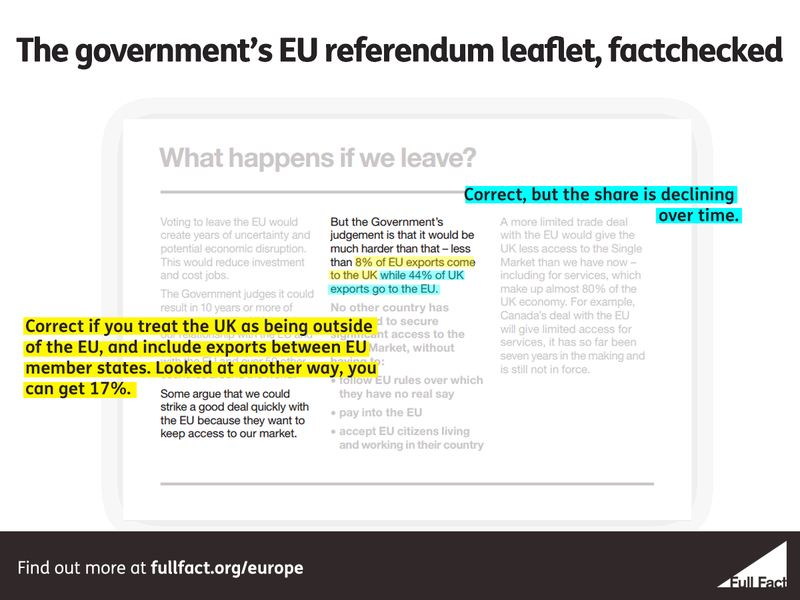The government's EU leaflet: exports

“Some argue that we could strike a good deal quickly with the EU because they want to keep access to our market. But the Government’s judgement is that it would be much harder than that—less than 8% of EU exports come to the UK while 44% of UK exports to go the EU.”
Whether the 8% is correct depends on how you treat exports from the EU. Looked at another way, you can get 17%.
Either way the data is quite unreliable, and can change depending on whether you look at which countries in the EU say they export to the UK, and what the UK says it imports from other countries in the EU.
Join 72,953 people who trust us to check the facts
Sign up to get weekly updates on politics, immigration, health and more.
Subscribe to weekly email newsletters from Full Fact for updates on politics, immigration, health and more. Our fact checks are free to read but not to produce, so you will also get occasional emails about fundraising and other ways you can help. You can unsubscribe at any time. For more information about how we use your data see our Privacy Policy.
The UK is estimated to make up just under 8% of total EU exports in 2014, according to Eurostat data. That treats the UK as being outside of the EU, and includes exports between EU member states.
If you treat the EU minus the UK as one block and look at who it exports to, the UK takes a 17% share of exports, compared to 83% to the world outside the EU.
Those figures count both exports in goods and services.
About 44% of UK exports in goods and services went to other countries in the EU in 2014.
That share has been declining, as exports to other countries have been increasing at a faster rate.
It’s sometimes argued that these statistics overstate the proportion of UK exports that go to the EU, as a lot of goods pass through ports like Rotterdam before being shipped to a final destination outside the EU.
Both the Office for National Statistics and the government's review of our EU membership have concluded that it's hard to quantify the extent of this ‘Rotterdam effect’ or establish whether it's a serious problem for the statistics.
It’s not clear what would happen to this trade if the UK votes to leave the EU. If the UK leaves the EU, the future rules on trade would depend on what kind of agreement, if any, the UK reaches with the EU after its departure.